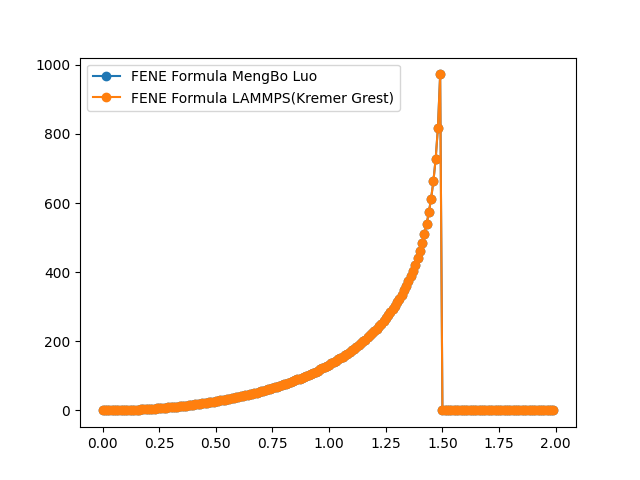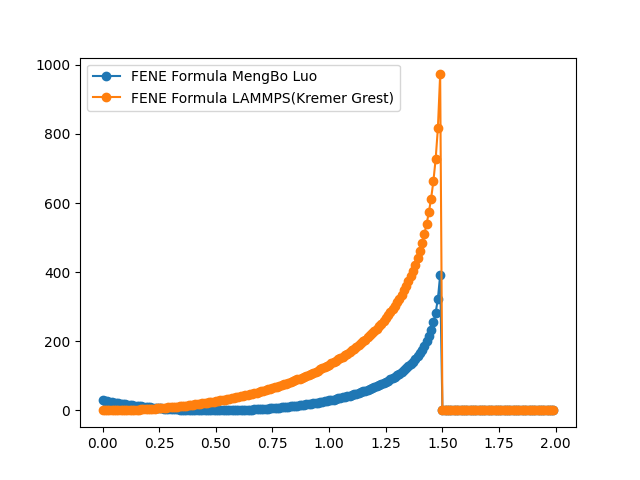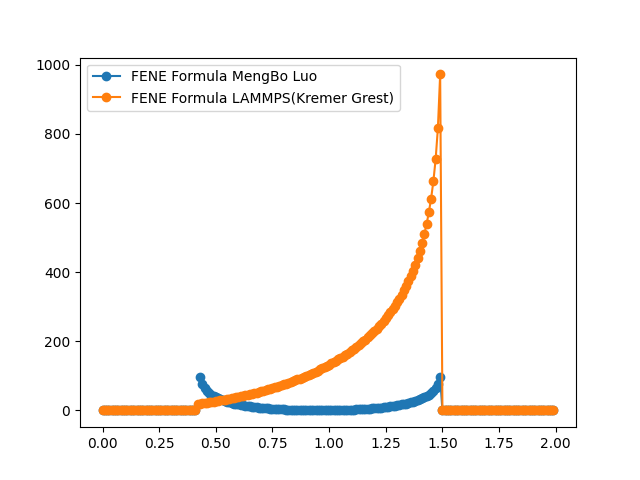Dear LAMMPS Users,
Fene Potential assumes the functional form as mentioned in Kremer-Grest (KG) Model, i.e.

and the expression I stumbled across in of the papers:
(Wang, C.-H., Luo, M.-B., Xu, X., Wang, C., & Sun, L.-Z. (2019). Effects of salt concentration on the polyelectrolyte translocation through a cylinder nanopore. European Polymer Journal, 121, 109332. )
So these two functional forms are basically the same in the sense that if r_{eq} = 0. One gets the Kremer Grest functional form. What I don’t understand is the fact that in the KG model while defining the initial structure of the polymer, they mentioned that
The chains were generated by a simple MC procedure as random walks with a bond length of = 0.97 and with a restriction on backfolding so as to give approximately the correct persistence length.
So, the equilibrium length is defined. So, technically, r_{eq} \ne 0. So, why is it not accounted in the KG FENE potential formula?
In the second FENE formula, one can say the bonds are oscillating, within the limits, about r_{eq} . What can be infered from KG FENE formula? That they are oscillating and bouncing off each other? I’m not able to physically understand this.
Further more I plotted both of them togther, just to see, If I’m able to draw some conclusion and here is what I got:
for :
r_{eq} = 0

r_{eq} = 0.5

r_{eq} = 0.976


I’m not able to make sense of it at all.
Thanks
